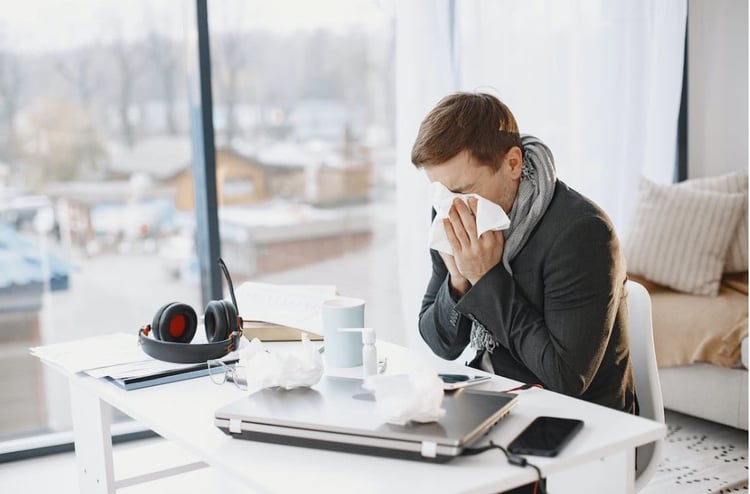
Sick Building Syndrome (SBS) is a complex and often misunderstood condition. It is characterised by a collection of non-specific symptoms that occupants of a particular building experience, often linked to the time they spend within the premises.
The symptoms, ranging from headaches and fatigue to respiratory problems, typically improve or disappear once the individual leaves the building. However, these health concerns can significantly impact employee well-being and productivity.
Understanding Sick Building Syndrome
SBS is typically the result of poor indoor environmental quality. Common causes include inadequate ventilation, chemical contaminants from indoor or outdoor sources, and biological contaminants such as bacteria, mould, pollen, and viruses. While the symptoms can often be vague and varied, recognising the early signs can help prevent more severe health problems.
Identifying Poor Indoor Air Quality
Poor indoor air quality is a principal contributor to SBS. Stale or stuffy air, unusual odours, and noticeable changes in humidity are signs that indoor air quality is compromised. These issues may indicate an inadequate ventilation system or the presence of air contaminants, which can trigger various health problems if left unchecked. Regular monitoring of air quality can help identify potential issues before they escalate.
Recognising Physical Symptoms
Physical symptoms associated with SBS are diverse. They often include headaches, dizziness, nausea, fatigue, eye and throat irritation, and respiratory problems. Notably, these symptoms tend to improve or disappear upon leaving the building, and this correlation is a strong indicator of SBS. Therefore, it is essential to pay attention to these physical signs and take appropriate action if they persist.
Spotting Issues with Lighting
Poor lighting conditions can significantly contribute to SBS. Symptoms such as eye strain and headaches can be triggered by inadequate lighting, glare, or flickering lights. Such conditions can cause physical discomfort and reduce productivity. So, ensuring a building has proper and sufficient lighting is critical to a healthy indoor environment.
Checking for Mould or Water Damage
Mould or water damage can lead to a severe case of SBS. Mould exposure can lead to respiratory issues, headaches, and other health problems. Persistent coughing or shortness of breath, particularly at work, may suggest the presence of mould or water damage. Regular inspections can help identify and address these issues early.
Taking Action
Suspecting a case of SBS requires prompt and decisive action. A professional indoor air quality assessment can provide insight into the severity of the problem. An experienced electrical and mechanical contractor can conduct a comprehensive inspection of the premises to identify potential issues and suggest effective remediation measures. Addressing the causes of SBS can dramatically improve the health and well-being of building occupants.
Protect Building Occupants from SBS with Lowe & Oliver's Expert Maintenance Services
Sick building syndrome can significantly impact the health and productivity of building occupants. Recognising the early signs and understanding when to seek professional help is critical to maintaining a safe, healthy, and efficient working environment.
Protect your business and employees from Sick Building Syndrome with the expert services of Lowe & Oliver. For more information on how our team of experts can help you, explore our comprehensive building maintenance services.
Image Source: Pexels



